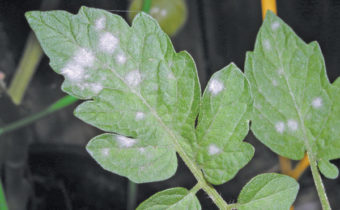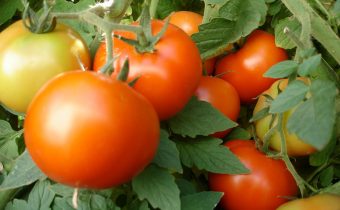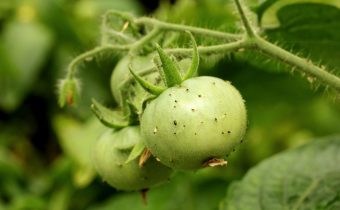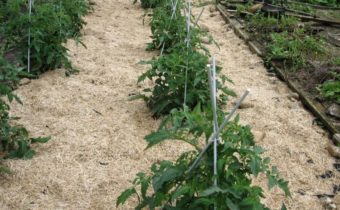How not to overfeed tomato seedlings?
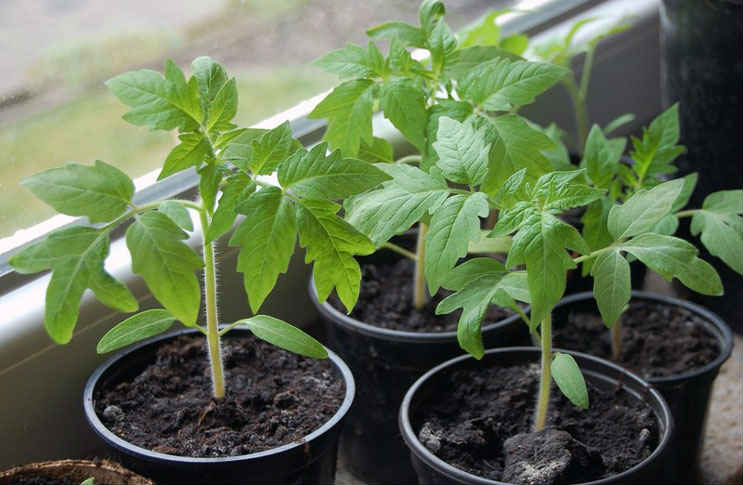
Seedlings of tomatoes growing on fertile soil, fertilizing may not be required until the planting in the ground. First of all it concerns the purchased substrate for seedlings that are already saturated with nutrients.
In the case of using a self-made earthen mixture, a gardener needs to rely on the appearance and condition of the plants when choosing a top dressing scheme. It is important not only to fill the nutritional deficit in a timely manner, but also not to give too much. “Over-feeding” seedlings can have more detrimental effects than nutritional deficiencies.
How to feed seedlings
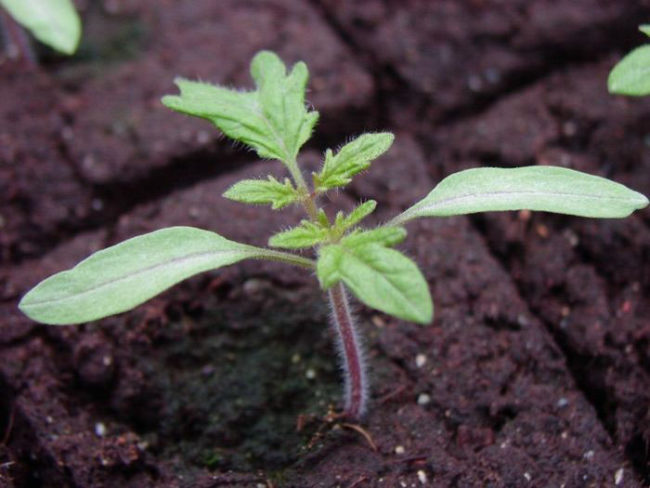 If for cultivation of seedlings of tomatoes take the usual garden soil (as a rule, quite poor), then use the standard scheme of four dressings:
If for cultivation of seedlings of tomatoes take the usual garden soil (as a rule, quite poor), then use the standard scheme of four dressings:
- 2-3 weeks after germination;
- after 8-10 days;
- 10 more days later;
- a week before transplanting to a permanent place.
Young tomatoes require phosphorus to build up a strong root system and nitrogen to gain vegetative mass, therefore the standard food for them is a mixture of mullein and wood ash. For its preparation, it will be necessary to dissolve 250 g of wood ash in a bucket of water, stir it, let the mixture stand for a day and pour 3 tablespoons of slurry into it. Fertilizer must be thoroughly mixed.
But the condition of the plants may require as additional feeding, and skipping one of the planned ones. If tomato bushes grow well and look healthy, you should not interfere with their metabolism.
Phosphate rules
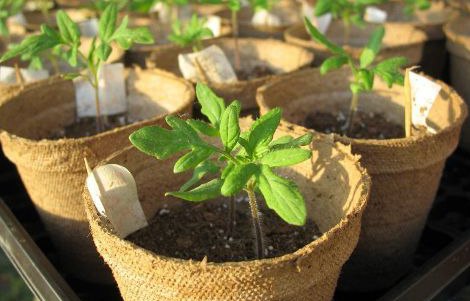 Seedlings need phosphorus, if the leaves on the bush begin to rise, and their edges twist inward. The purple color of the vein, stalks and leaves on the reverse side appears less frequently when the deficit of the macro element is acute. In this case, the leaves begin to curl down.
Seedlings need phosphorus, if the leaves on the bush begin to rise, and their edges twist inward. The purple color of the vein, stalks and leaves on the reverse side appears less frequently when the deficit of the macro element is acute. In this case, the leaves begin to curl down.
The reason may be not only the actual shortage of the substance, but also the lack of lighting or too low temperature of the content of the seedlings. In both cases, the tomatoes will not be able to assimilate the substance from the soil; therefore, it is senseless to give top dressing; If the reason is in the soil, phosphate fertilizer should be applied.
An effective measure will be watering with a solution of superphosphate. To do this, 100 g of the substance must be poured with a liter of boiling water and infused for about a day in a warm place, stirring from time to time. After that, 150 ml of solution should be dissolved in a bucket of water.
Phosphorus is better absorbed with nitrogen. In the finished solution is to add 20 g of urea or ammonium nitrate, but just before use - the mixture can not be stored.
If the plants look good, but I want to insure, it is recommended to give tomatoes as a regular feeding wood ash infusion. This substance is safe and has a fungicidal effect.
When and how to give nitrogen
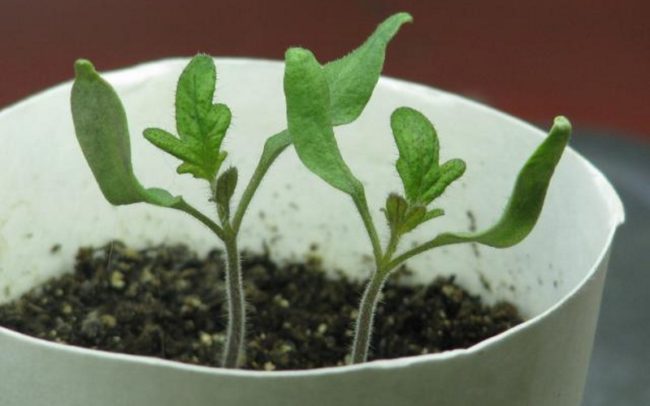 A sure sign that the plant needs nitrogen is blanching of the leaves and discoloration of the veins in the direction of red or blue. The tissue between the veins may acquire a yellowish tint. Often, nitrogen deficiency is experienced by overgrown seedlings, which for some reason linger on the windowsill.
A sure sign that the plant needs nitrogen is blanching of the leaves and discoloration of the veins in the direction of red or blue. The tissue between the veins may acquire a yellowish tint. Often, nitrogen deficiency is experienced by overgrown seedlings, which for some reason linger on the windowsill.
If saplings intensively gain green mass, possess strong, saturated green shade with leaves, it is worth refraining from nitrogen feeding. Excess nutrition will cause "fattening" of the bushes, because of which flowering may subsequently linger. If nitrogen is needed, seedlings can be poured with a solution of cow dung or carbamide.
Trace elements and potassium
Deficiency of potassium and trace elements in young tomatoes is rare, but some types of soil are very poor with these substances, because of which the deficiency can also occur in seedlings. For example, acidic soils often contain little magnesium, calcium, copper, molybdenum. Magnesium deficiency is also observed on sandy and sod-podzolic soils, and boron on alkaline soils.
Signs of deficiency:
- Iron deficiency is manifested by chlorosis between the veins. In a sufficiently adult seedling lower leaves can be painted in brown or white.
- Lack of magnesium is reflected in the color of the lower leaves - pale spots appear on the plate, which eventually become yellow, and then brown. The edges become pale.
- Boron deficiency can be recognized by drying out of the top of the bush and the growth of a large number of lateral shoots.
- Tomatoes need calcium if there are many small yellow spots on their leaves, and young leaves are deformed.
- Top dressing with copper is required if the leaves of the tomatoes become pale, with a bluish tinge, and the young shoots grow underdeveloped and weak.
- A lack of potassium causes curl tops of the bush and drying of the leaf plate along the edge.
When deficiencies are found in tomatoes, foliar feeding should be carried out with a solution of the corresponding substance:
| Missing item | Substance | Solution concentration |
| Iron | Iron sulfate | 0,25% |
| Magnesium | Magnesium nitrate | 0,05% |
| Boron | Boric acid | 0,05% |
| Calcium | Calcium Nitrate | 0,2% |
|
Copper
|
Copper sulfate | 0,01-0,02% |
| Sulphate copper | 0,2% | |
| Potassium | Potassium sulfate | 0,15% |
Not always deficiency of trace elements is a consequence of their insufficient content in the soil. Some nutrients do not assimilate plant roots due to improper temperature conditions, alkaline soil reaction, or an excess of other substances in it. For example, the absorption of iron can be difficult for tomatoes because of too long daylight hours, so the seedlings should also be made light in order to moderately.
Actions with excess power
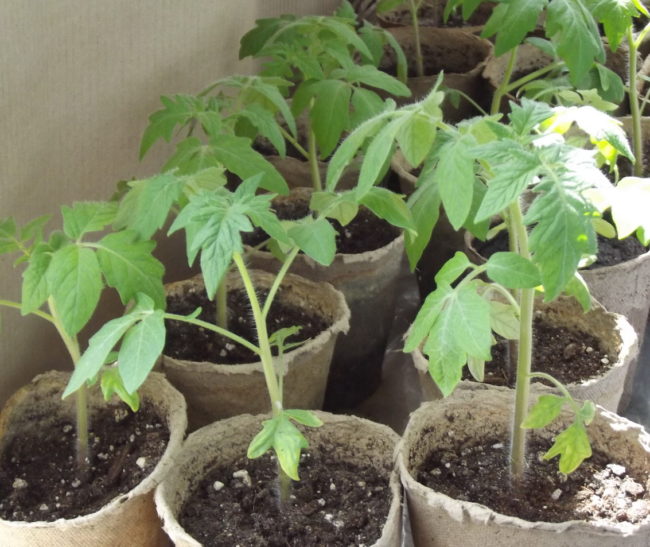 An oversupply of tomatoes is considered a bigger problem than a deficiency. First, it is much more difficult to reanimate the overfedged plant and the probability that the bush will fully recover is lower. Secondly, overfeeding not only adversely affects the health of tomatoes, but also causes a shortage of other elements.
An oversupply of tomatoes is considered a bigger problem than a deficiency. First, it is much more difficult to reanimate the overfedged plant and the probability that the bush will fully recover is lower. Secondly, overfeeding not only adversely affects the health of tomatoes, but also causes a shortage of other elements.
Symptoms of overfeeding
Identifying signs of excess and nutritional deficiencies is not easy, because many of the symptoms are the same and not all signs appear at the same time. In view of this, if any element is suspected of poisoning, it is worth plentifully watering the seedlings, allowing water to drain into the pan to wash the substance from the ground.
Signs of plant poisoning by macro-and microelements:
- Nitrogen. Excess macro accompanies the intensive development of the green part of the bush: the stems look powerful, the leaves are large, rich dark green. It provokes a lack of manganese, boron and zinc.
- Phosphorus. The leaves on the bush turn yellow, become covered with necrotic spots and fall off. When phosphorus poisoning plants can not absorb calcium, copper, boron and zinc. Intensive consumption of potassium and zinc can cause a deficiency of these trace elements.
- Potassium. The growth of bushes slows down, the color of the leaves becomes lighter. The appearance of multiple spots of light and dark green is possible. An excess of potassium provokes a lack of nitrogen, manganese, magnesium and zinc, due to poor absorption of these elements.
- Calcium. Leaf plate turns yellow between the veins. Pale, often wet spots appear, necrosis develops.The processes of assimilation of potassium, phosphorus, iron, magnesium and boron are impaired.
- Iron. It is impossible to distinguish iron deficiency from poisoning in seedlings by external signs, since the symptoms of these conditions are absolutely identical. An excess of iron prevents the production of manganese from the soil.
- Boron. The leaves are covered with round spots, in place of which the top layer of tissue dries. The leaves of the upper tier of the bush curl upward in the direction of the main vein.
- Magnesium. The leaves at the top curl, and the bottom - darken and dry.
- Manganese. The leaves turn pale between the veins, on the lower - dark or white spots are formed, the upper - are deformed. Perhaps the appearance of dark brown speckles on the entire bush.
- Zinc. The veins of the lower leaves become dark red, and the back side of the plate is colored purple. Sometimes growths or clear spots appear. The edges of the leaves curl down. There is a slowdown in growth, possibly dying off of the tops and falling off of apparently healthy leaves.
- Copper. Brown spots appear on all leaves of the bush.
An excess of molybdenum does not have a toxic effect on seedlings, even if the element accumulates in plant tissues in significant doses.
Ways of resuscitation
The only effective measure with an excess of nitrogen, potassium and manganese will be transplanting plants to another substrate. When poisoning with other elements, you can try the following resuscitation measures:
| Element | Treatment |
| Phosphorus | Give foliar dressing with a 0.1% solution of boric acid. Repeat the procedure 2 more times with an interval of 7 days |
| Calcium | Liberally water the bushes with acidified water. Give root dressing with potassium sulfate or spray with a solution of boric acid (0.1%) |
| Iron | Spray the bushes with a pale pink solution of potassium permanganate. If symptoms persist, transplant seedlings, completely replacing the soil |
| Boron | Plentifully water the plants |
| Magnesium | Feed with carbamide or potassium sulfate |
| Zinc | Feed seedlings with superphosphate |
| Copper | Water the bushes with a 0.1% Ferrovit solution. |
Top-dressing of tomato seedlings is not the case when “you cannot spoil the porridge with oil”: it is more difficult to cope with the consequences of an excessive dose of micro and macro elements than with a lack of nutrients.
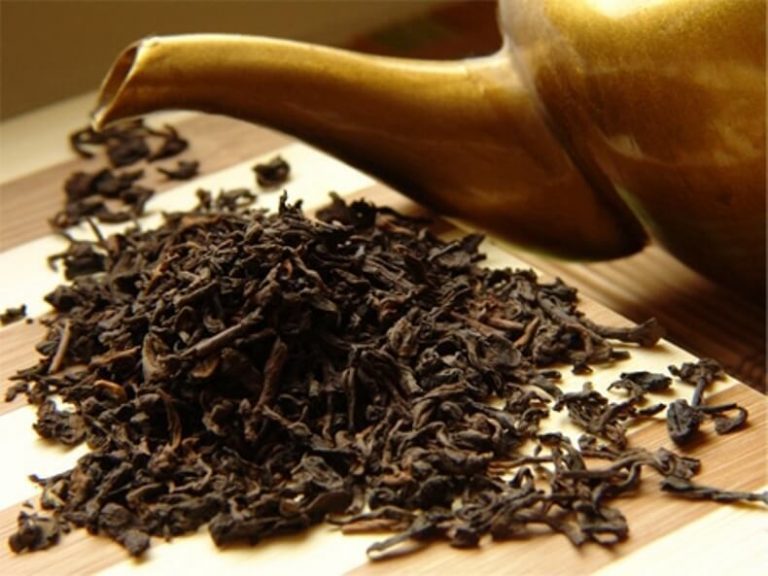
But in the case of seedlings, overfeeding is not as dangerous as when growing adult tomatoes, since seedlings can always be moved to a new ground. At the same time, antagonist fertilizers should be added to the well, for example, in case of nitrogen poisoning, it is recommended to put about 0.5 kg of wood ash into the planting pit.


